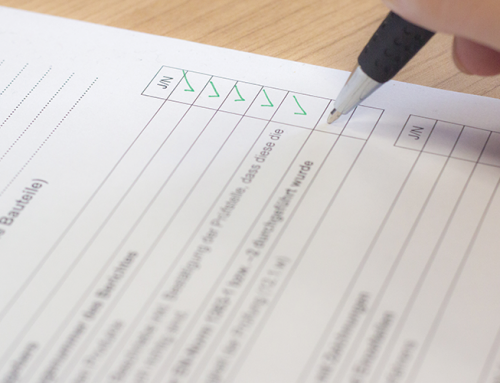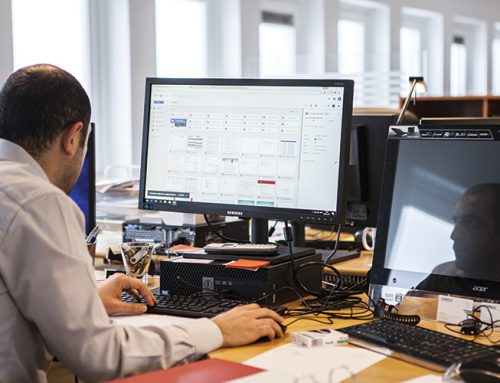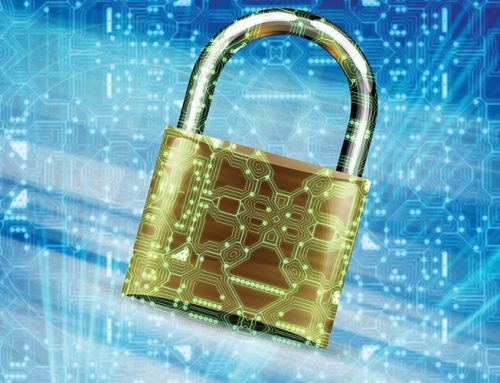Business travel is nothing new. Nor is taking technology along for the trip. But as we become more reliant on our tech, we must be more vigilant about our protection, especially with business documents. Hackers watch for unsuspecting business travelers. Before you go, make sure you’ve prepared your tech tools for secure travel.
Before You Go
Brush up on technology best practices:
1. Email spam, Link Checking, Wi-Fi
Watch for emails sent at strange times, repeated incorrect grammar, a call to urgency, and always verify the sender.
Pro tip: If you get an email from yourself to yourself that you did not send, do not open. It seems rather obvious, but this tactic has unfortunately fooled many.
2. Pick up: privacy screens, back-up chargers, webcam covers
Add privacy screens to prevent any looky-loos, get a backup charger in case yours dies or gets lost, and either purchase a webcam cover or use a piece of tape.
3. Disable auto-connect features
While convenient, it’s best to make sure you’re verifying every connection request to your phone so that no one is accessing your devices without your knowledge.
4. Don’t use borrowed or public chargers
This is an ingenious tactic to steal information. You think you’re getting a charge; they’re downloading the data on your device.
5. Look at Wi-Fi network names for errors
Free Wi-Fi is great, but not when it’s a trap. Never create an account to use free Wi-Fi. It’s an attempt to steal information. Always verify open Wi-Fi networks with the facility provider.
6. No sharing location, files, GPS, etc.
Restrict sharing permissions from your location, GPS, and files. No one needs to know where you’re at, what’s in your files, etc.
7. Have an incident response plan in place
If something should happen, it’s best to know how to minimize the damage quickly and efficiently. Having a checklist prepared allows your team to execute without being slowed down by uncertainty.
For your laptop
Update your operating system (OS)
An out-of-date OS makes you an easier target for would-be hackers. Cinch up your device with a quick update the day before your travels.
Update software/Install patches
Outdated software and non-patched systems leave gaps in security that are easy to break into. While you’re at it, update your anti-virus is updated.
Encrypt your external devices + hard drive
Encryption is an added layer of security.
Install a Virtual Private Network (VPN)
A VPN essentially imitates a private network without needing to be physically connected to one.
Backup files
In the event that your files become encrypted by a third party, or are lost or stolen, it’s wise to have them backed up to a secure storage location.
Clear browser history and cookies
Clearing your browser history and cookies removes stored information that your electronics keep to expedite authentication processes, fill out forms faster, or store your checkout information. This can help hackers get into your personal accounts elsewhere.
Strong passwords
If you haven’t been practicing this strategy, now is a good time to implement it. Strong passwords contain a combination of upper and lowercase letters, numbers, and special characters. This makes passwords harder to crack.
For your tablet/phone
- Update OS
- Clear history
- Password-enable your devices
- Set your devices to auto-lock in the shortest time period possible
We hope you wouldn’t leave your front door unlocked to your house while you’re gone. Don’t do the equivalent with your devices.
While Traveling
- Don’t put your electronics in items you plan to check.
- Keep them on you so no one can tamper with them.
- Place tech items on security conveyor belt last. This ensures that you’re the closest one to your things once they clear security and there can be no “accidental” grabs from someone in front of you.
- Keep devices in view.
- Much like your luggage, don’t leave your devices unattended. This means in your seat on the airplane, too. Take your phone or lock/shut down your devices while you’re not with them.
- Place in Airplane Mode when possible
- Don’t use unknown flash drives or USBs. This includes free giveaways. Free stuff is neat, but now when it’s a free virus.
- Don’t use open Wi-Fi. Passwords keep nefarious users out.
Upon Return
Your trip went off without a technological hitch. Great! We still want you to run some diagnostic procedures on your devices, just in case.
- Scan devices
- Change passwords and PINs
- Check with IT Department/Provider to ensure you’ve done a thorough check
Do you have any fun work trips planned? Tell us on Twitter @CCRManagedIT.
Subscribe to our blog






